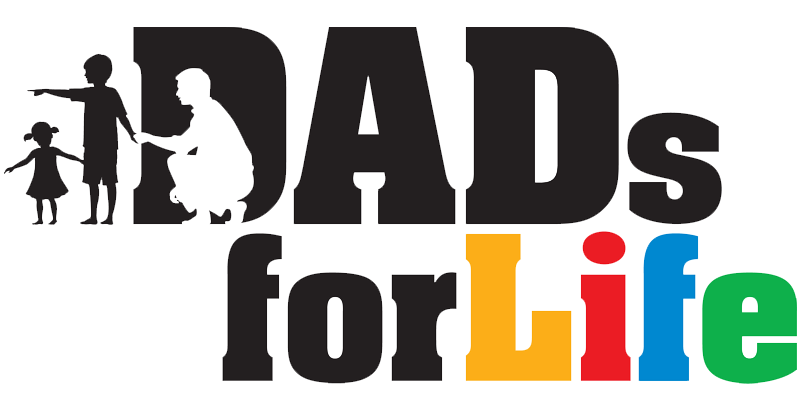Introduction
 The following is an abstract of what predicts fathers’ involvement with their children. It is the result of a prospective study of intact families by Eirini Flouri and Ann Buchanan, Department of Social Policy and Social Work, University of Oxford, UK.
The following is an abstract of what predicts fathers’ involvement with their children. It is the result of a prospective study of intact families by Eirini Flouri and Ann Buchanan, Department of Social Policy and Social Work, University of Oxford, UK.
Father involvement has been shown to have positive child development outcomes, but continues to receive limited attention in research compared to mothering. It is generally accepted that fathering can be demonstrated in multiple ways and results from various factors and experiences. It is also recognised that fathering is more sensitive than mothering to contextual factors.
Most studies looked at the role of four major components in contributing to father involvement:
- Contextual factors
- Father’s characteristics
- Mother’s characteristics
- Co-parental relations.
In this study, the writers included another component: The child’s characteristics. Longitudinal data from the UK’s National Child Development Study was used to explore these components at three developmental stages in a child in intact families: early childhood, middle childhood and adolescence.
Method
• National Child Development Survey (NCDS)
The NCDS is a continuing longitudinal study of 17,000 children born between 3 and 9 March 1958 in England, Scotland and Wales. Its aim is to improve the understanding of factors affecting human development over the lifespan.
To date, six follow-ups have been made. These were carried out in 1965 (cohort members were aged 7), in 1969 (aged 11), in 1974 (aged 16), in 1981 (aged 23), in 1991 (aged 33) and in 2000 (aged 42).
Measures
• Father Involvement at Age 7, 11 and 16 years
The items on father involvement, rated on 3-point scales, were ‘outings with father’, ‘father manages the child’, ‘father reads to child’ (as reported in the NCDS by mothers) and ‘father is interested in child’s education’ (as reported by teachers). The study used developmentally appropriate measures of accessibility and direct interaction.
Accessibility can occur when the father is actively interacting with the child or is near enough to be directly involved if needed. Direct interaction involves one-on-one interaction between father and child, such as playing, reading or talking at dinner.
• Child’s Characteristics
The child’s characteristics included in this study were gender, birth-order (first-born child or not), emotional and behavioural problems, and educational attainment at each developmental stage.
The Rutter ‘A’ Health and Behaviour Checklist was used to measure emotional and behavioural problems. The parent was asked whether the description of the behaviour applies to the child ‘never’, ‘sometimes’ or ‘frequently’.
Educational attainment was measured with mathematics tests by the National Foundation for Educational Research (NFER), with a 10-item problem arithmetic test at age 7, a 40-item mathematics test at age 11, and a 31-item mathematics comprehension test at age 16.
• Father’s and Mother’s Characteristics
These included age of the parents at the time of the child’s birth, age they left full-time education, and employment status at each developmental stage.
• Co-parental Relations and Contextual Factors
Co-parental relations were measured with the Health Visitor’s assessment at age 7 of evidence of domestic tension and mental illness in the family.
Contextual factors were socio-economic status of parents at child’s birth, number of children under age 21 in the household and evidence of financial difficulties.
Results on Father Involvement
Simultaneous hierarchical linear regression models predicting aspects of father involvement at age 7, 11 and 16 were used.
• Managing the Child
At age 7, fathers are more likely to take on an active role in managing their child if the child is a boy and has fewer emotional and behavioural problems, if the father is not employed, and if the co-parental relationship is good.
• Reading to the Child
Fathers are more likely to read to their child if the child is first-born and has fewer emotional and behavioural problems, if the family is smaller and not of low socio-economic status, if the father is more educated and not employed, and if the mother also reads to the child.
• Going on Outings
Fathers are more likely to take outings with their child if the child is a boy and has fewer emotional and behavioural problems, if the family is smaller and not of low socio-economic status, if the mother is more educated and herself takes outings with the child, and if the co-parental relationship is good.
• Showing Interest in Child’s Education
Finally, the father is more likely to be interested in the child’s education if the child has fewer emotional and behavioural problems, if the family is not of low socio-economic status, if the father and mother are more educated, and if the mother herself takes interest in the child’s education.
Mediator effects
To better understand the relationship between the child’s temperament and father involvement, the writers tested a series of mediated models. Mediation is found when a previously significant relationship between the independent variable and the dependent variable becomes insignificant when the effect of the mediator on the dependent variable is taken into account.
The writers found that there was no evidence that domestic tension at age 7 mediated the relationship between child’s emotional and behavioural problems and father’s interest in child education at age 7.
No evidence was found that domestic tension directly influenced the relationship between child’s emotional and behavioural problems and any other indicators at age 7. Similarly, no evidence indicated that domestic tension at age 7 mediated the relationship between child’s emotional and behavioural problems at age 7 and any of these indicators of father involvement at a later stage.
Discussion
The writers found that fathers of children at both ages 7 and 11 were more likely to manage and take outings with their sons than their daughters. They found no gender difference in the frequency in which the father read to the child or in the level of father’s interest in the child’s education.
This supports previous findings that fathers are more involved with their sons, but also suggests that the generalisation of father’s great involvement with sons requires some further specification. In fact, fathers tend to be equally involved with their son or daughter in various other activities, including reading and education.
Fathers are more likely to be highly involved in their children’s education if they are doing well academically. But research has also shown that children are more likely to do well in school and have fewer emotional and social problems if their fathers are involved.
The writers also found no significant mediation effects when testing the relationship between child’s emotional and behavioural problems, domestic tension, and father involvement. This suggests a direct relationship between child’s emotional and behavioural problems and father involvement.
Financial circumstances per se did not impact on father involvement, and larger families were associated with low levels of father involvement.
More educated fathers were more likely to show an interest in their child’s education. Unemployed, disabled or retired fathers were more likely than their employed counterparts to be involved with their young children.
Limitations of study
One of the key limitations of this study is that data from NCDS may be outdated. It may well be that parenting in 1965-74 differs from parenting in today’s families.
While the representative nature of the study has been generally maintained, analysis of non-responsive bias has indicated high losses of participants in more disadvantaged groups. Hence the analysis may underestimate the long-term impact of disadvantage in families.
Conclusion
Father involvement is continuous, strongly related to mother involvement, and multi-dimensional. For policy makers and practitioners, this means engaging fathers in their children’s lives from an early age should guarantee that they will remain involved throughout the childhood stage.
Abstract by The Dads for Life Resource Team, which comprises local content writers and experts, including psychologists, counsellors, educators and social service professionals, dedicated to developing useful resources for dads.
First published on 23-05-2011.
